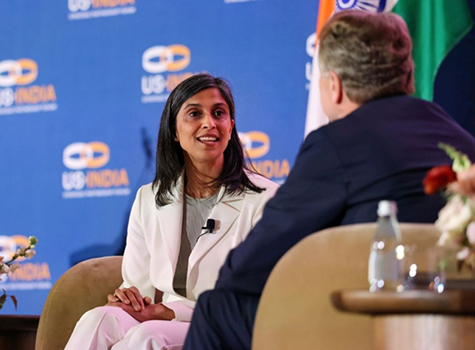
If not for COVID-19, we would have been celebrating the 18th anniversary of the annual Dances of India performances. Audience members would have been travelling from as far away as India, South America, South Carolina, Ohio, New York, Michigan and many other states to see this show. This year we were almost prepared to showcase more temple dances and storytelling through folk traditions. However, like everyone else, we are on hold!
Even though I am busy working remotely, nothing boosts my spirits like classical dances. People often ask me as to why I am sticking with only traditional dance styles and not open to incorporating Bollywood in my show. In my opinion, everything has its own place. It all depends on individual teacher’s own vision and passion. My passion is the traditional dance styles that include classical dances and traditional folk dances.
I love to research and learn about the influences of Indian dances on world cultures. I want to show people visually our similarities and differences. Our signature dance, “Unity in Diversity” has been acclaimed by many for its uniqueness and the beauty of inclusion. I believe when you know where you are coming from, it is easier to understand where you are going.
Since the age of five, I had a strong desire to dance. My father nourished my wishes. I discovered that dancing was not predicated upon the movements of legs and arms, but that it grew from an inner urge for prayer in motion. I see many of my students in the same light. Either the parents are fulfilling their own unmet dreams through their children or the students themselves want to experience the joy of dancing. My students’ enthusiasm, motivation, energy and happiness while dancing are totally contagious. They boost my spirit each day.
Irrespective of the general opinion, there is a huge demand for classical dances. These dances not only teach discipline, but also stories from Hindu religion, long-term commitment to an art form that is very difficult to learn, and a perfect balance of right and left brains. The stories told through dances are not known even to some of the new generation of Indians coming to the USA. Many of my students have been admitted into prestigious colleges due to their long-term commitment to these classical dance forms and training. When these students commit to the traditional dance forms for 7 to 10 years, their overall commitment to achieve their life goals is apparent.
Several people also ask me about the language barrier these second-generation Indians face in this country. They wonder how these students are able to express the stories told through dancing so beautifully. This language barrier is not unique to second generation. As India has so many spoken languages, it is almost impossible to learn them all. As teachers/gurus we explain the stories to the students to bring out the inner emotions of storytelling using dance as a medium.
Many teachers, who have moved to the USA making it their home, have a great opportunity to take it out of India and spread these seeds of culture. Some of the Indian dance teachers in the U.S.A. teach these dances to support themselves financially. Some teachers like me may want more out of it, such as reintroducing our culture to our own Indian community, introducing the culture to the non-Indian community and building recognition, appreciation, interest and respect for our culture. As we are learning Western culture, we should also teach Indian culture in exchange. We all have to learn to grow.
Traditional dances have already gained popularity in the US, thanks to many great musicians and performers who continue to contribute to this popularity. Each person’s contribution to these arts becomes an integral part of the overall vision to share these beautiful dance forms with the world.
In my opinion, with the widely growing interest and popularity of Indian classical dances, the need and search for authentic exposition is pressing and dance shows of this dimension and character are indeed the need of the hour. Indian art is a science, a discipline, an art and an exposition at the same time. With the co-operation, philanthropy and good will of the art lovers of the U.S.A., I am confident of promoting and fostering an appreciable understanding of the ancient cultural heritage of India among the aesthetic public. Arts are not to be restrained from sharing with others. They are suitable for all cultures. I am eagerly looking forward to Dances of India production in 2021. Stay healthy!
———-
For questions or comments contact Maha via e-mail at: Gingrichmaha@gmail.com
Posted: Monday, August 31, 2020



